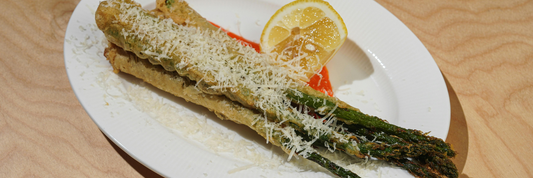The global matcha market is expanding rapidly as consumer demand for clean-label beverages, functional ingredients, and wellness-focused lifestyles continues to grow. From ceremonial-grade matcha sourced in Japan to mass-market culinary products used in cafés, bakeries, and CPG brands, the matcha market is evolving at an unprecedented pace. This report provides a comprehensive overview of market size, trends, opportunities, and long-term forecasts shaping the global matcha industry.
-
Matcha Powder – Complete Guide to Matcha Green Tea Powder (2025)
-
12+ Matcha Packaging Ideas for Different Products
-
Matcha Grades: Ceremonial vs Premium vs Culinary
Matcha Market Summary

Global matcha market size (historical and latest estimates)
The global matcha market has grown steadily over the last decade, supported by rising awareness of matcha’s health benefits and the rapid expansion of café culture worldwide. Historical data shows double-digit growth in demand, particularly in North America and Europe, where matcha consumption has shifted from niche to mainstream.
Matcha market CAGR and forecast (2024–2032 / 2030)
Forecasts for the matcha market indicate a strong CAGR through 2030 and beyond. Growth is driven by premium-grade matcha adoption, RTD beverages, and rising interest in Japanese-origin functional foods.
Why the matcha market matters now (health, social, culinary)
The matcha market stands at the intersection of wellness trends, social media virality, and culinary innovation. Its antioxidant content, aesthetic appeal, and versatility make matcha a standout ingredient in the modern F&B industry.
Key Matcha Market Drivers

Health & wellness demand driving the matcha market
Consumers seeking antioxidant-rich, low-caffeine, and stress-relief beverages have helped drive the matcha market upward. L-theanine, EGCG, and natural chlorophyll content contribute to matcha’s market appeal.
Matcha market growth from beverages (lattes, smoothies) and food (bakery, ice cream)
Cafés worldwide now heavily rely on matcha lattes, smoothies, ice creams, bakery products, and pastries as high-margin menu items. This diversification supports stable matcha market growth.
Social media and viral trends powering matcha market adoption
Matcha’s vibrant green color dominates TikTok, Instagram, and Pinterest. Visual-driven platforms accelerate matcha market expansion by turning simple drinks into lifestyle statements.
Premiumization and specialty-grade matcha in the market
Consumers increasingly want ceremonial-grade matcha, single-origin matcha, or sustainably farmed matcha. Premiumization boosts revenue and sets clear market segmentation.
Matcha Market Restraints & Challenges

Supply constraints and matcha shortages impacting the market
Limited production regions and meticulous farming practices sometimes result in supply bottlenecks.
Climate change, crop yields and production risks in the matcha market
Extreme weather, inconsistent rainfall, and rising temperatures threaten tencha crop yields, putting long-term pressure on the global matcha market.
Price volatility and its impact on the matcha market
Seasonal harvests, rising labor costs, and logistics disruptions create price instability in ceremonial and premium-grade segments.
Regulatory and food-safety issues affecting international matcha market trade
Export licenses, pesticide regulations, and food-safety testing add complexity to global matcha distribution.
Matcha Market Segmentation (by Product & Use)
By Grade — Ceremonial matcha market, Culinary matcha market, Classic/Everyday grades
-
Ceremonial grade: Highest quality; dominant in premium markets.
-
Culinary grade: Used in cafés and foodservice.
-
Everyday grade: Affordable, high-volume matcha market segment.
By Form — Matcha powder market, Instant matcha, Liquid matcha, Matcha premixes
This segmentation reflects consumer preference for convenience, flavor consistency, and ready-to-drink formats.
By Product Type — Pure matcha market, Flavored matcha market, Blended matcha products
Blended matcha products (matcha plus collagen, probiotics, or adaptogens) are among the fastest-growing categories in the matcha market.
By Application — Beverage market, Food & bakery market, Personal care & cosmetics market, Supplements
Matcha’s versatility makes it valuable in beverages, desserts, skincare, and dietary supplements.
Matcha Cheesecake: The Ultimate Guide to Baked, No-Bake & Basque Styles
Matcha Market Channel & Distribution Analysis
Online matcha market — e-commerce growth, DTC brands, marketplaces
Direct-to-consumer matcha brands thrive due to storytelling, education, and subscription models.
Offline matcha market — supermarkets, specialty tea shops, foodservice
Retail shelves and cafés dominate offline matcha distribution, especially in premium markets.
Foodservice & retail partnerships influencing the matcha market
Collaborations between cafés, bakeries, and matcha suppliers significantly shape market adoption.
Private-label & white-label matcha market opportunities
Many cafés and wellness brands now launch their own matcha lines, boosting profitability.
Regional Matcha Market Analysis

Asia-Pacific matcha market — Japan, China, South Korea
Japan remains the production hub; China expands manufacturing; Korea increases matcha-infused product lines.
North America matcha market — US & Canada demand drivers
The U.S. leads global matcha consumption outside Asia, driven by wellness culture and café innovation.
Europe matcha market — Western Europe adoption & premium segments
Europe’s matcha market prioritizes organic certifications and high-grade ceremonial matcha.
Emerging markets — Middle East, Australia, Africa
Rising disposable income and café culture boost matcha adoption in emerging regions.
Supply Chain & Production Dynamics in the Matcha Market
Matcha production process and its effect on market supply
Shading, hand-harvesting, steaming, drying, and stone grinding make matcha production labor-intensive.
Tencha supply, stone grinding, and scarcity risks
Tencha leaves are limited, and stone grinding output is low creating scarcity in premium segments.
Export-import flows and trade tariffs affecting the matcha market
Tariffs and customs regulations impact pricing and supply stability.
Sourcing strategies and contract farming for matcha market stability
Long-term farm partnerships ensure consistent quality and reliability.
Pricing, Cost Structure & Economics of the Matcha Market

Price segmentation — ceremonial vs culinary pricing
Ceremonial-grade matcha commands significantly higher prices due to lower yields and specialized processes.
Cost drivers: labor, grinding, certification, shipping
Labor-intensive farming, organic certification, and cold-chain packaging increase production costs.
Impact of shortages on matcha market prices and margins
Seasonal shortages elevate prices, particularly in premium and online markets.
Competitive Landscape — Matcha Market Players
Major global matcha brands and manufacturers
Key brands compete on quality, region of origin, shading technique, and sustainability credentials.
New entrants, DTC challengers and private label brands
New brands leverage storytelling, aesthetics, and influencer marketing to disrupt the matcha market.
M&A, partnerships and strategic moves
Collaborations among tea farms, beverage chains, and wellness brands shape distribution power.
Consumer Behavior & Matcha Market Demand Insights
Demographics and buyer personas
Key buyers are millennials, Gen Z, athletes, wellness consumers, and café-goers.
Usage occasions
Morning routines, energy drinks, dessert flavoring, baking, and beauty rituals fuel demand.
Search intent and keywords driving matcha market traffic
Consumers search for matcha benefits, grades, recipes, drink ideas, and best brands fueling organic growth.
Product Innovation & Adjacent Markets
Matcha in food innovation
Matcha croissants, cakes, confections, and ice cream expand the culinary matcha market.
Matcha in personal care
Skincare, masks, and supplements incorporate matcha due to antioxidant properties.
Matcha premixes, RTD beverages, and instant matcha
Convenient products dominate retail shelves and digital marketplaces.
Sustainability, Certifications & Traceability
Organic matcha market and certification trends
Demand for organic matcha rises with consumer preference for chemical-free foods.
Ethical sourcing and traceability
Transparency about origin, farming methods, and processing strengthens brand trust.
Climate adaptation and sustainable farming
Shade nets, regenerative farming, and soil restoration help secure long-term matcha supply.
Marketing & Go-to-Market Strategies
Branding and premiumization tactics
Origin stories, luxury-grade packaging, and craftsmanship narratives position brands effectively.
Influencer, social, and visual marketing
Matcha thrives in visual platforms video content accelerates matcha market adoption.
Retail merchandising and product placement
Eye-catching packaging and clear grading systems drive in-store conversions.
Matcha Market Forecasts & Investment Opportunities

Short-term and long-term forecasts
Demand expected to rise across all categories particularly RTD beverages and ceremonial grades.
Investment hotspots
Premium matcha, e-commerce, functional blends, and ready-to-drink formats show highest ROI.
Risks and mitigation
Climate uncertainty, supply shortages, and price volatility require smart sourcing strategies.
How to Enter the Matcha Market — Practical Guide
Sourcing and supplier selection
Businesses must verify farm certifications, region of origin, shading practices, and grinding methods.
Quality control and grade testing
Color, particle size, aroma, and amino acid levels determine grade and price.
Distribution and pricing
Brands should balance DTC, wholesale, and subscription models for scalable growth.
Data, Reports & Sources on the Matcha Market
Top market reports and key takeaways
Trade associations, Japanese tea authorities, and global market intelligence firms provide insights.
How to interpret matcha market data
Differences in grade, definition, and segmentation result in varied market-size estimates.
Appendix — Technical Notes & Definitions
Definitions: matcha, tencha, ceremonial grade, culinary grade
Clear terminology supports better understanding of segment-based market performance.
Methodologies used by market reports
Survey sampling, import/export tracking, and value-chain analysis explain market estimation.
Glossary of matcha market terms
Includes shading, umami index, amino acids, particle micronization, etc.
FAQs
What is the size of the global matcha market today?
Estimates vary by source but show strong year-over-year growth.
What is the projected CAGR of the matcha market?
Forecasts suggest steady growth driven by health-conscious consumers and café expansion.
Which country is the largest producer in the matcha market?
Japan leads high-grade production; China leads volume-based matcha.
Why is the matcha market facing shortages?
Climate stress, labor shortages, and slow tencha processing cause supply gaps.
What are the different matcha grades?
Ceremonial, premium, classic, and culinary grades each with distinct pricing.
How is e-commerce changing the matcha market?
DTC brands, subscriptions, and influencer-led launches are transforming demand patterns.




